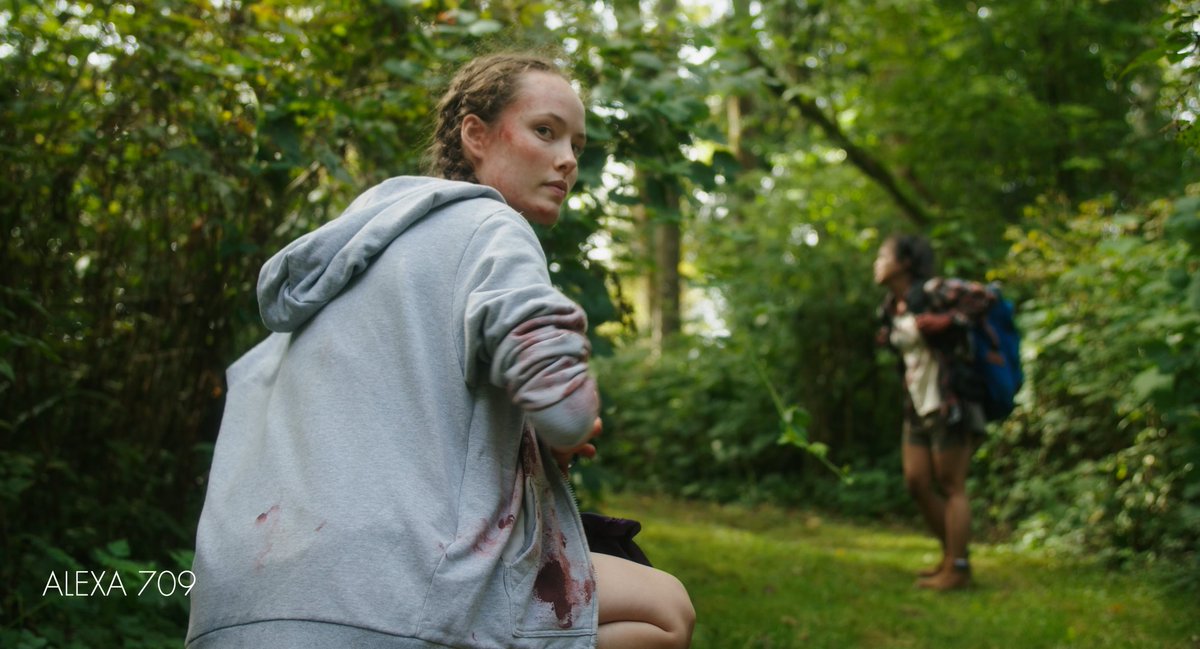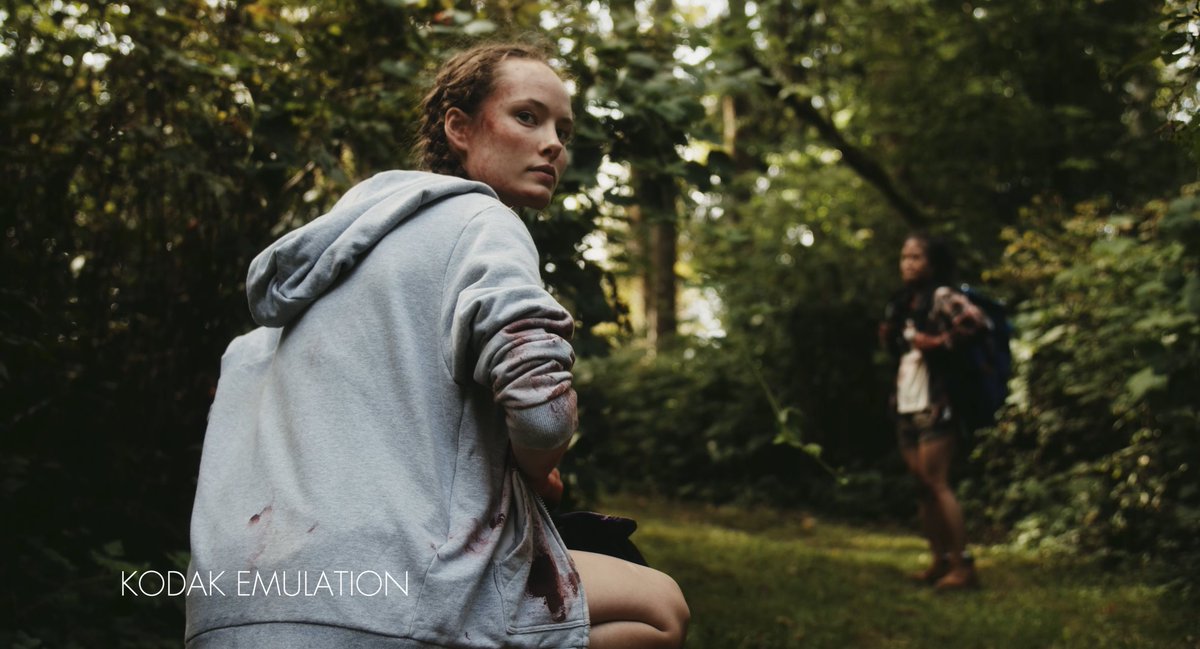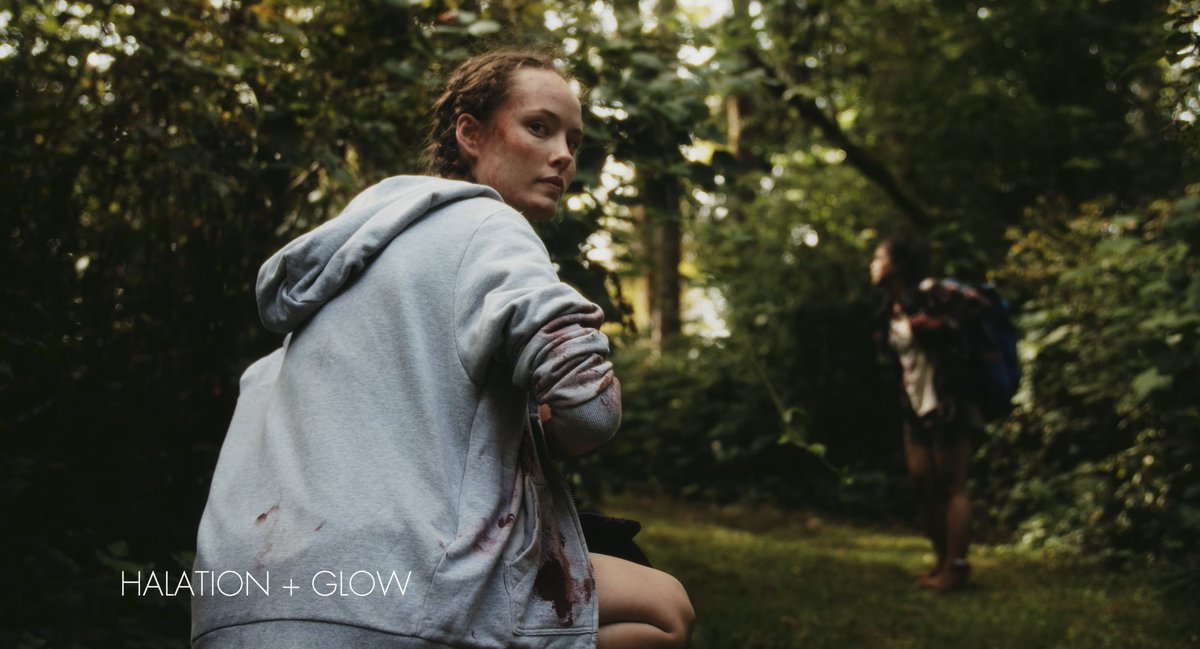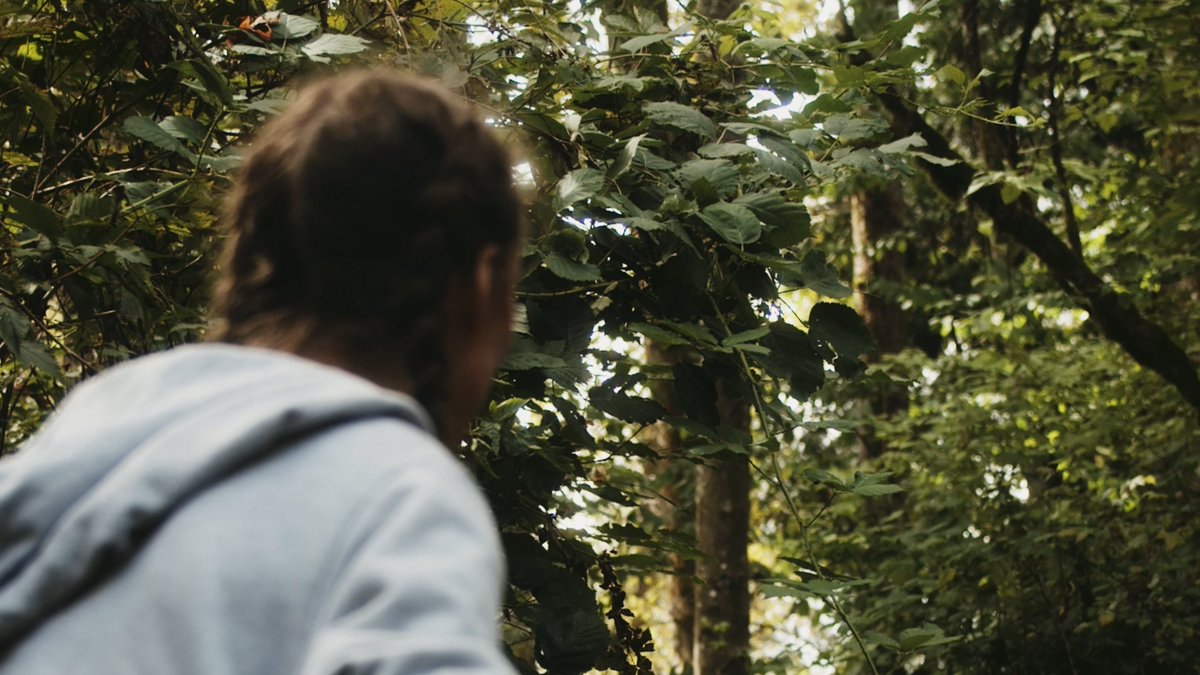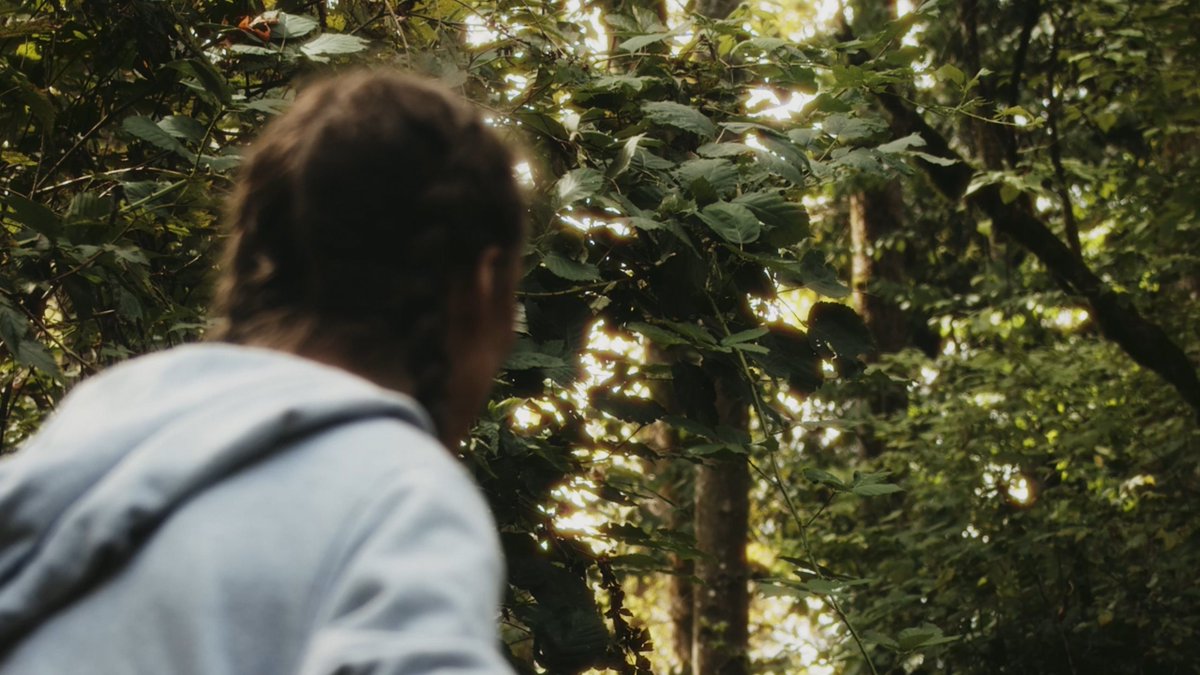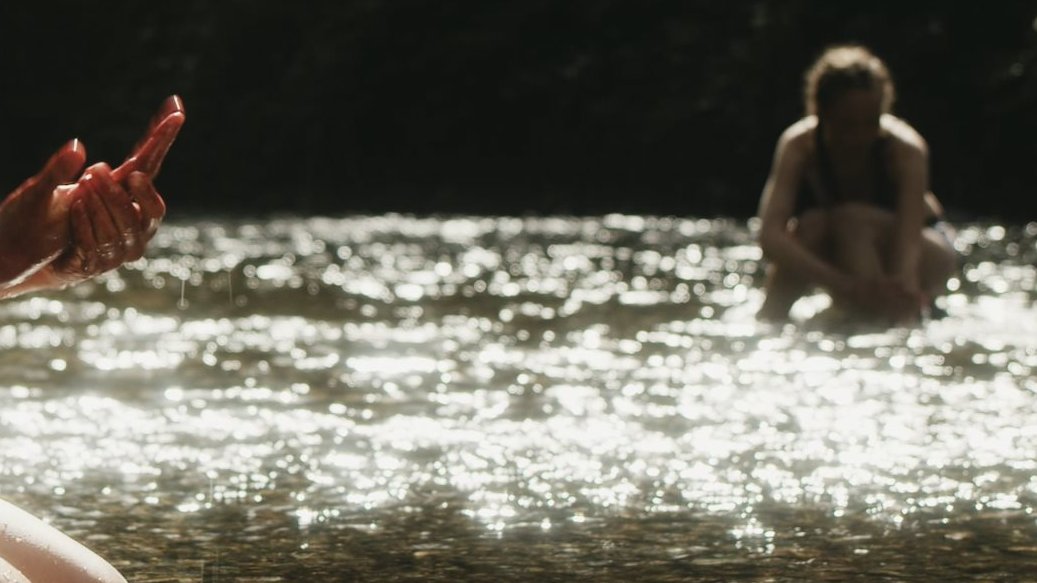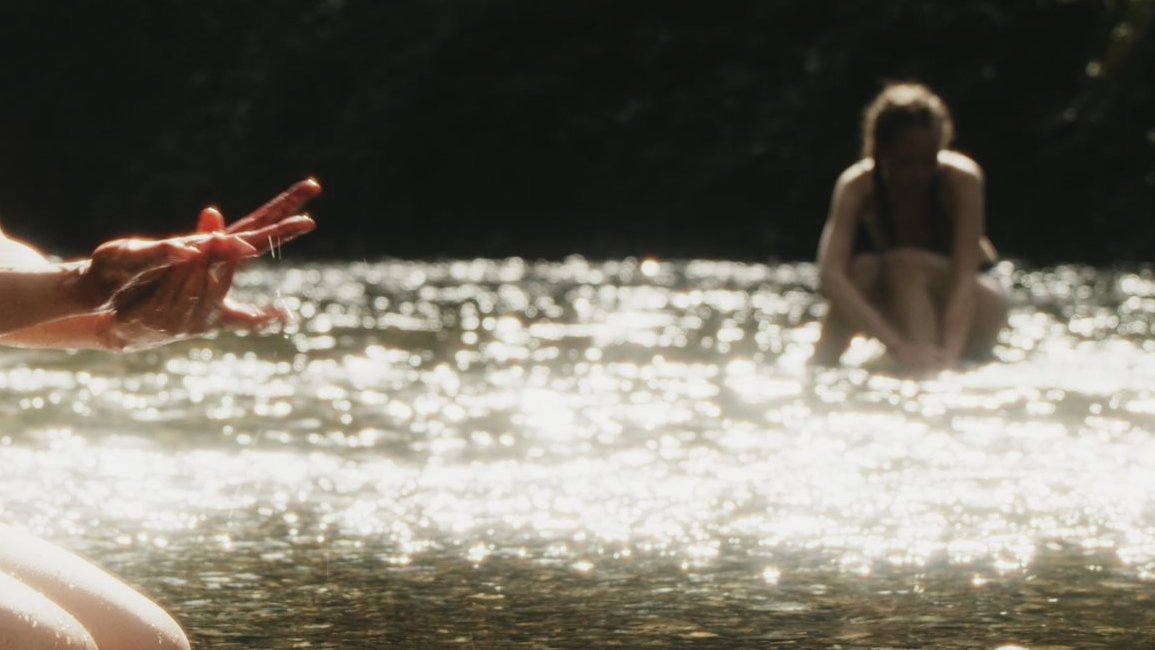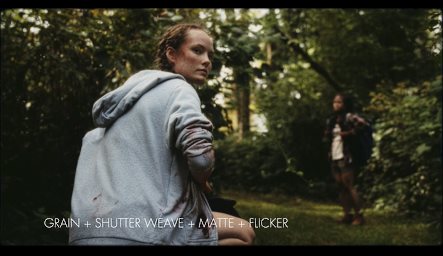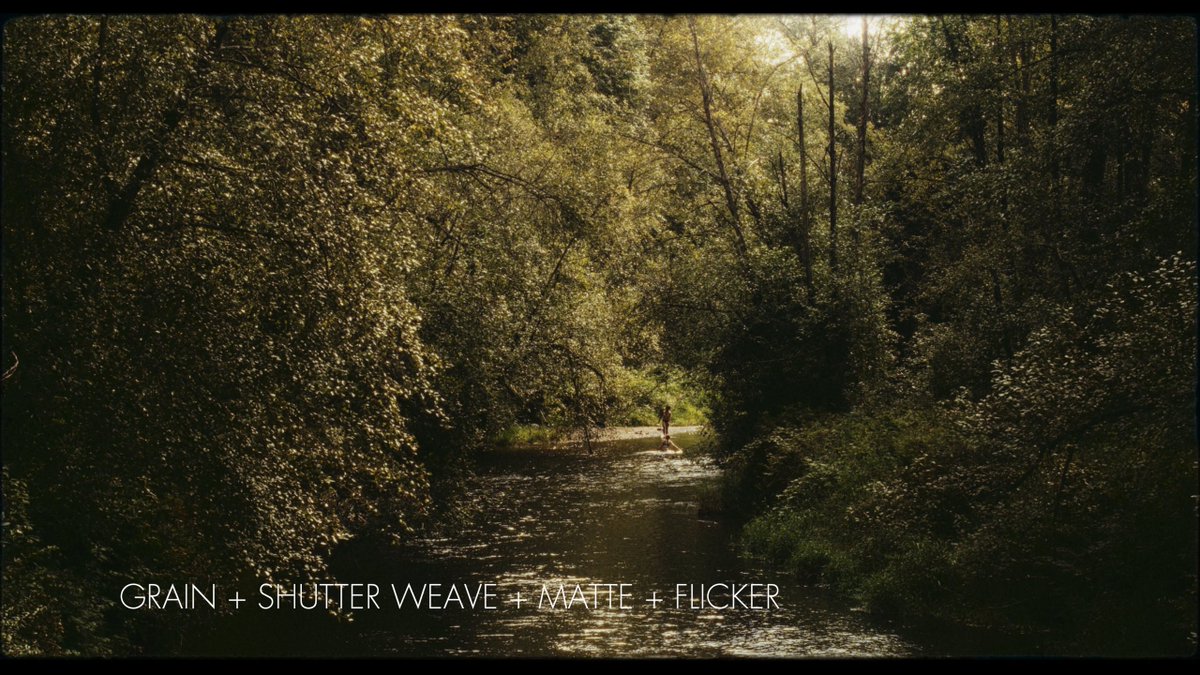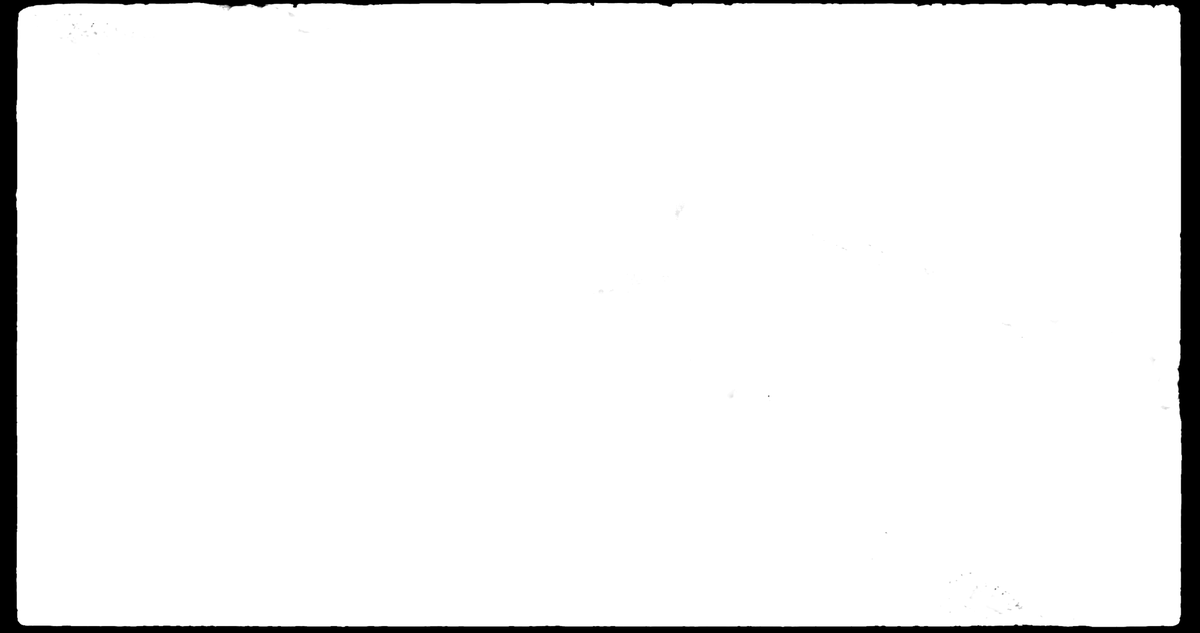I talk a lot about film emulation and digital cinematography, but it's rare that I get as good an opportunity to experiment with them as I did with @doctorgloria's new short A SAFE DISTANCE. Here's a little demo I made to demonstrate the process.
The process begins on-set, and with a series of decisions: do we want to actually emulate the properties of film, or certain visual tics that folks tend to associate with film but are separate phenomena?
An example of the latter is vintage lenses; they tend to make a film feel 'older', more 'textured', but they really have nothing to do with film as a medium. In this case, our guiding principal was giving the film an image texture that meshed with the atmosphere of the location.
On-set, what did this mean? The first step was capturing high-quality image data. To fit the square peg of digital image capture into the round hole of 35mm emulation, one needs to capture all of the data modern 35mm film stock might capture, and then some.
This means 'protecting' highlights from clipping and oversampling the image; shooting in a high enough resolution that the inherent format differences are overwhelmed by the sheer amount of data you have at your disposal.
As a softening filter enthusiast, I took the opportunity to use Glimmerglass, which is an optical filter I've been dying to use ever since Chris Blauvelt used them to such great effect in FIRST COW.
I'll just go ahead and over-explain this comparison demo now.
The first samples are misleadingly labeled; this is Blackmagic Pocket 4k footage processed with a color space transform to emulate the Arri Alexa's Rec709 profile. This is mostly for demo purposes to showcase what the footage looks like in a more 'neutral' state.
However, I did use a similar color space transform to get the footage into Arri's LogC space, as it tends to be a more flexible starting point for film emulation.
In the second frame, two big changes: first, I've used my own homebrew spin on a Kodak Portra emulation LUT specifically designed for the Arri Alexa. I've also done some other basic colour work for aesthetic purposes, but for the sake of the demo I've kept it to a minimum.
Next, a halation/glow pass. Celluloid highlights 'blow out' in a fundamentally different way than digital highlights do, but there are numerous ways to emulate this. I've picked one.
The 'glow' effect is very subtle in this shot, but it essentially lowers the contrast of areas surrounding highlights. Not necessarily an inherent thing with film, but a common result of subpar/old/poorly coated lenses.
The final pass involves four operations. The most significant of these is the addition of grain. I tend to prefer to use a generator as opposed to an overlay, as I'm able to e.g. add more grain to the shadows than to the highlights with this technique.
The second is a subtle flicker. It's only visible in motion, and this element is fairly unique in that it's intended to emulate what a film -projector- looks like, as opposed to film scanned and exhibited digitally.
Film projectors tend to flicker at 48hz, and this creates a different effect than digital projectors which tend to be 120hz (120 flickers a second.) A subtle flicker, at least, evokes this.
Third is 'shutter weave'. Long story short, each frame of film never 100% lines up with previous frames as they flow through the film gate. This leads to an image that is ever so slightly unstable. This is easy to emulate; just destabilize the image in post slightly!
AND LASTLY! This is the only element that I think is even a little cartoonish, but it's fun: a soft edge matte. It's probably most visible in this frame.
And that's it! We made it!
What would I have done differently if I had had a buncha money to throw around and the same goal? Probably lenses; we shot this on a Sigma 18-35mm and a Canon 100-400mm L series, and those are both rather sharp, character-free lenses.
Cooke S4s would have been quite nice, I think; old spherical Panchros or Super Balthars would have been neat if we had wanted to go whole hog with making everything feel a little more detached from concrete reality.
Another good question is "why not just shoot it on film!" and the answer, to me, is mostly a matter of practicality. We would not have been able to shoot this film in a day with the resources we had available in any way other than on a digital camera. Not even close.
The nice thing about techniques like this is, once acquired, they're easily transferred to other projects. Coming up with a new formula is difficult, but it's a great tool to keep in one's toolkit.
The idea that celluloid film is somehow imbued with special properties is pretty much antithetical to the way I see the job of cinematographers: it's a means to an end. My job is to arrange dots of light on a screen in a certain way.
I do want to shout out the many (mostly avant-garde) artists who genuinely use celluloid film in ways that are fully separate from the capabilities of digital, but let's be real: that's not what we're talking about when we're talking about the use of digital in stuff like Mank.

 Read on Twitter
Read on Twitter